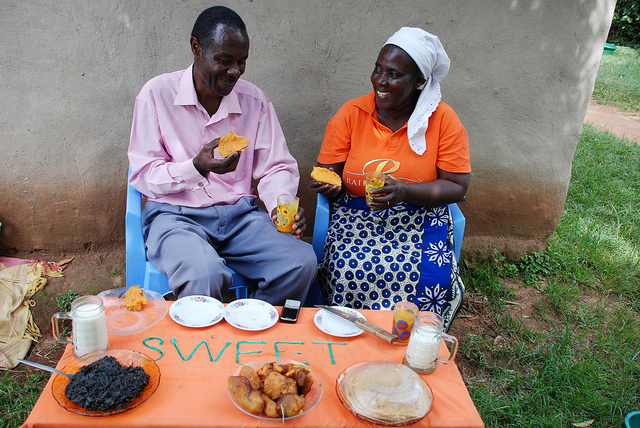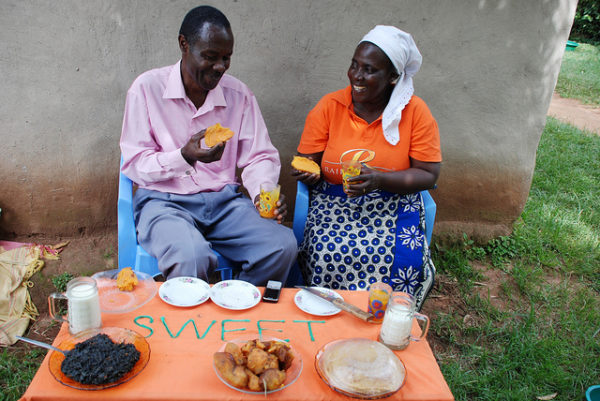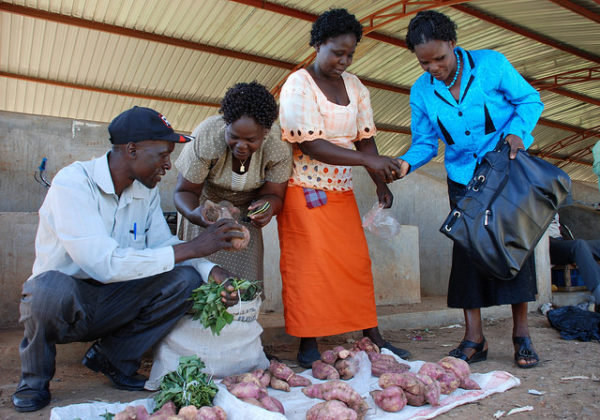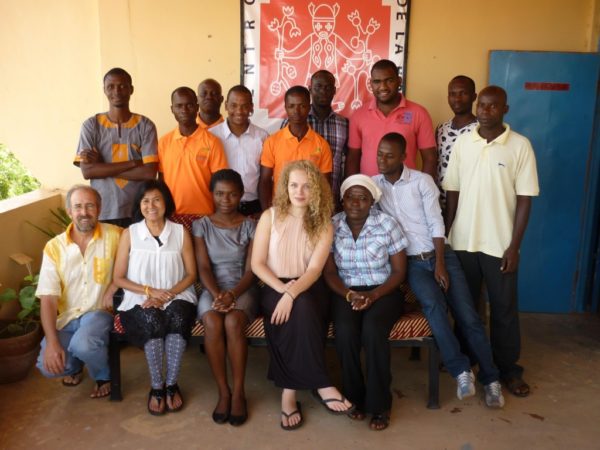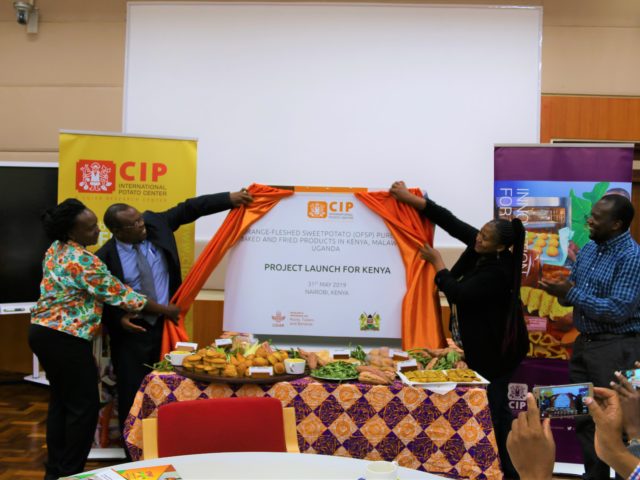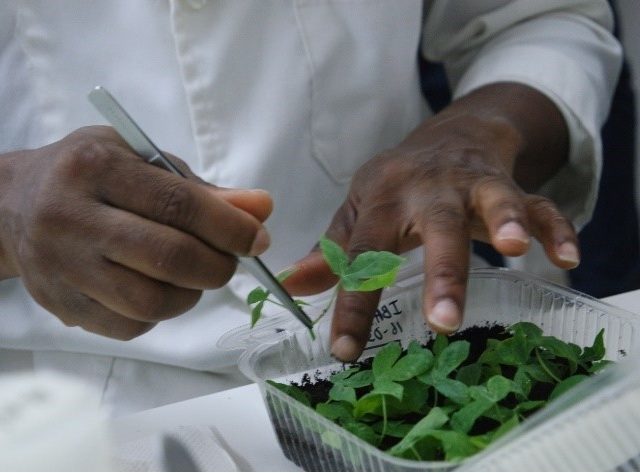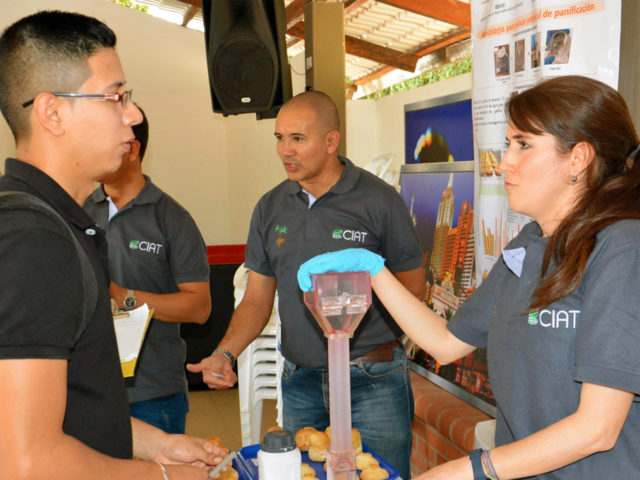Chinonso Etumnu, Department of Economics, University of San Francisco, examines whether intra-household bargaining power and health information influence consumer acceptance of Orange-Fleshed Sweet Potato in Ghana.
The United Nations World Food Programme estimates that over 790 million people in the world do not have enough food to lead a healthy, active life. Though less obvious, many more people (more than 2 billion people) are estimated to be suffering from micronutrient malnutrition.
A common form of micronutrient malnutrition is vitamin A deficiency (VAD). VAD causes blindness, impairs growth and cognitive development, and increases the risk of other infections that can lead to death, especially among children and women. It is prevalent among poor households in developing countries who largely depend on staple crops for their nutritional needs. To combat VAD, several targeted interventions are being implemented in Asia, Africa and South America such as provision of VAD supplements, processed food fortification, and more recently biofortification —a term used to describe a breeding strategy that aims to increase the micronutrient content of staple food crops.
Through biofortification, staple crops that are enriched with beta-carotene, a precursor of vitamin A in the body, have been hybridized. Orange-fleshed sweet potato (OFSP) is one of these crops. Like the traditional white-fleshed and yellow-fleshed sweet potato, OFSP is produced at similar costs and with similar taste. However, owing to its beta-carotene content, OFSP is orange in color. This raises concerns about its acceptance by consumers relative to traditional ones, which are mostly white or yellow in color.
Studies have shown that farmers and consumers are receptive to OFSP in Tanzania, Malawi, Uganda and Mozambique. Other studies demonstrate that consumers are willing to pay sizable premiums when informed about the nutritional value of OFSP and when OFSP possess similar attributes like the traditional alternatives.
Aside from providing nutritional information and ensuring that OFSP possesses attributes similar to traditional alternatives, are there other factors that can play crucial roles to the success of the OFSP intervention?
As an agricultural program with an objective of improving the nutrition and health status of poor households, especially children and women in developing countries, intra-household bargaining power may play a crucial role to the success of the OFSP intervention and the entire biofortification program. Women are primary caretakers of their household’s nutrition and health needs in many developing countries, a position that allows them to significantly influence household expenditures on food and health. Women have also been found to have higher preference than men to spend a larger share of the household budget on food and health if given more bargaining power, and this results in positive nutrition and health outcomes for their household members, especially their children.
In summer 2015, I had the opportunity to investigate this in Ghana under the project “Jump- starting Orange-Fleshed Sweet Potato in West Africa Through Diversified Markets” of the International Potato Center (CIP). This opportunity was facilitated by the CGIAR Research Program on Roots, Tubers and Bananas (RTB) in partnership with the University of San Francisco, through the RTB-University Gender Integration Partnership initiative, which connects university students with RTB gender researchers. With the help of my advisors, Professor Elizabeth Katz (University of San Francisco), and Dr. Putri Ernawati Abidin and Dr. Edward Carey (both based at CIP Ghana), and inputs from many other researchers and enumerators, I examined whether intra-household bargaining power and health information were key determinants of consumer acceptance of OFSP in Ghana.
My preliminary results and their implications: I found that bargaining power proxies of education, personal contribution to household income, and amount of land owned significantly but negatively affected consumer acceptance of OFSP. This result suggests that focusing on how to increase only household bargaining power of women is unlikely to be crucial to the success of the OFSP intervention and biofortification in general.
Conversely, I found that providing consumers with information about the nutritional benefits of OFSP impacted on acceptance of OFSP positively and significantly. This finding suggests that nutritional campaigns should be an integral part of the OFSP intervention, and the biofortification program.
Both findings could help in asserting or modifying aspects of the biofortification program to better achieve its intended goals. They also provide useful information for designing future agricultural programs targeted at women. Women empowerment programs such as cash transfers or subsidy programs might become more effective if educational campaigns about nutrition, health, and contraception are integrated with them.
As we celebrate International Women’s Day on March 8, at a time when the attention paid to the role of women in the success of agricultural technologies is limited, this study makes more information available that could help to improve the lives of women in developing countries.
Learn More
Doss, C. (2013). Intrahousehold bargaining and resource allocation in developing countries. The World Bank Research Observer, 28(1):52–78.
Naico, A. T. and Lusk, J. L. (2010). The value of a nutritionally enhanced staple crop: results from a choice experiment conducted with orange-fleshed sweet potatoes in Mozambique. Journal of African Economies, page ejq007.
Nestel, P., Bouis, H. E., Meenakshi, J., and Pfeiffer, W. (2006). Biofortification of staple food crops. The Journal of nutrition, 136(4):1064–1067.
Qaim, M., Stein, A. J., and Meenakshi, J. (2007). Economics of biofortification. Agricultural Economics, 37(s1):119–133.
